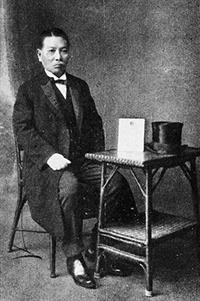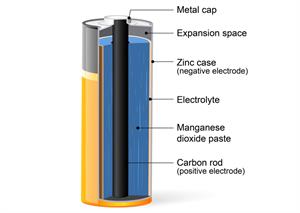
PUMPA - SMART LEARNING
எங்கள் ஆசிரியர்களுடன் 1-ஆன்-1 ஆலோசனை நேரத்தைப் பெறுங்கள். டாப்பர் ஆவதற்கு நாங்கள் பயிற்சி அளிப்போம்
Book Free Demo- A dry cell is commonly used as batteries for many electrical appliances like wall clocks, torches and toys.
- It is a convenient source of electricity available in portable and compact form.
- Yei Sakizo of Japan developed the dry cell in the year \(1887\).

Yei Sakizo
Construction:
- It is made of a zinc vessel which acts as a negative electrode or anode.
- The vessel contains a moist paste of sawdust saturated with a solution of ammonium chloride and zinc chloride.
- The ammonium chloride acts as an electrolyte.

Dry cell parts
What is an electrolyte?
The substance that becomes ions in a solution and acquires the capacity to conduct electricity is called an electrolyte. Sodium, potassium, chloride, calcium, magnesium, and phosphate are examples of electrolytes.
- The use of zinc chloride is to maintain the moistness of the paste as zinc chloride is highly hygroscopic.
- A carbon rod is placed inside the vessel, and it is covered with a brass cap.
- The carbon rod acts as a positive electrode or cathode, and it is surrounded by a closely packed mixture of manganese dioxide and charcoal in a muslin bag.
- Here, manganese dioxide(\(MnO_2\)) acts as a depolarizer.
- Finally, the zinc vessel is closed at the top with a pitch or shellac.
- A small hole is provided in the pitch that allows the gases to escape out during the chemical action.
- The chemical action that takes place inside the cell is the same as in a leclanche cell.
Fact:
Is the dry cell really dry?
We may think the dry cell will be dry, but actually, it is not dry. The electrolyte in the dry cell is in the form of a paste, but it is in liquids in the other types of cells.

Dry cells
Cells used in the wall clocks are an example of dry cells.
Reference:
https://commons.wikimedia.org/wiki/File:Yai_Sakizo.jpg
https://www.shutterstock.com/image-vector/parts-dry-cell-battery-vector-diagram-471050654